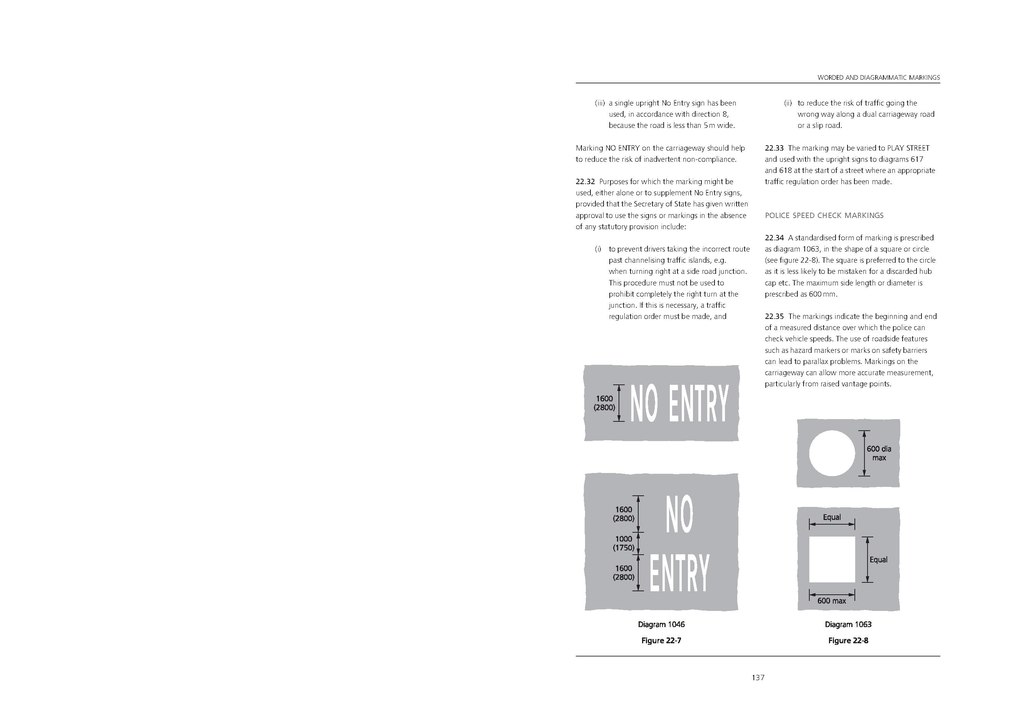(iii) a single upright No Entry sign has been used, in accordance with direction 8, because the road is less than 5 m wide.
Marking NO ENTRY on the carriageway should help to reduce the risk of inadvertent non-compliance.
22.32 Purposes for which the marking might be used, either alone or to supplement No Entry signs, provided that the Secretary of State has given written approval to use the signs or markings in the absence of any statutory provision include:
(i)to prevent drivers taking the incorrect routepast channelising traffic islands, e.g. when turning right at a side road junction. This procedure must not be used to prohibit completely the right turn at the junction. If this is necessary, a traffic regulation order must be made, and
(ii) to reduce the risk of traffic going the wrong way along a dual carriageway road or a slip road.
22.33 The marking may be varied to PLAY STREET and used with the upright signs to diagrams 617 and 618 at the start of a street where an appropriate traffic regulation order has been made.

POLICE SPEED CHECK MARKINGS
22.34 A standardised form of marking is prescribed as diagram 1063, in the shape of a square or circle (see figure 22-8). The square is preferred to the circle as it is less likely to be mistaken for a discarded hub cap etc. The maximum side length or diameter is prescribed as 600 mm.
22.35 The markings indicate the beginning and end of a measured distance over which the police can check vehicle speeds. The use of roadside features such as hazard markers or marks on safety barriers can lead to parallax problems. Markings on the carriageway can allow more accurate measurement, particularly from raised vantage points.

137
